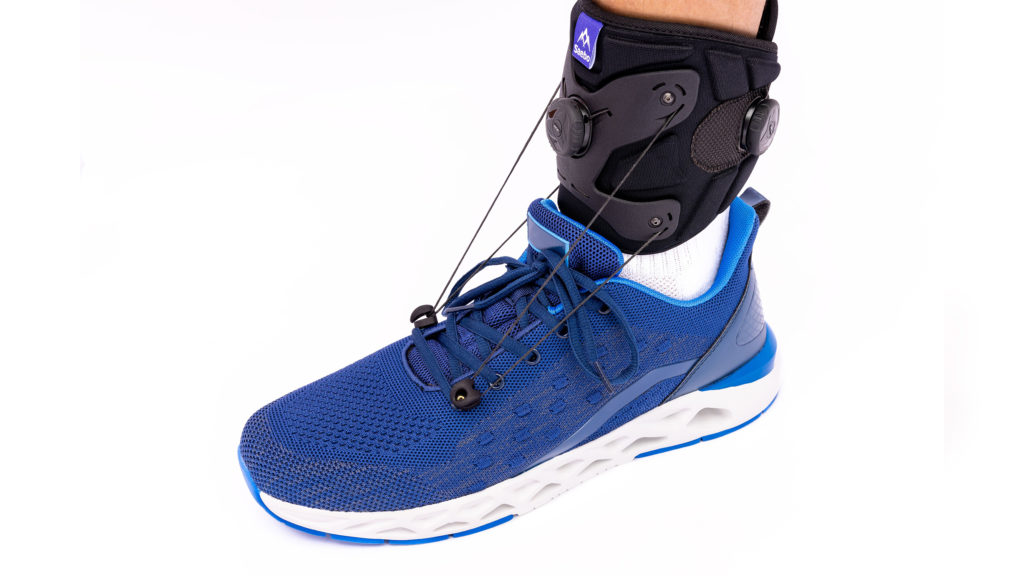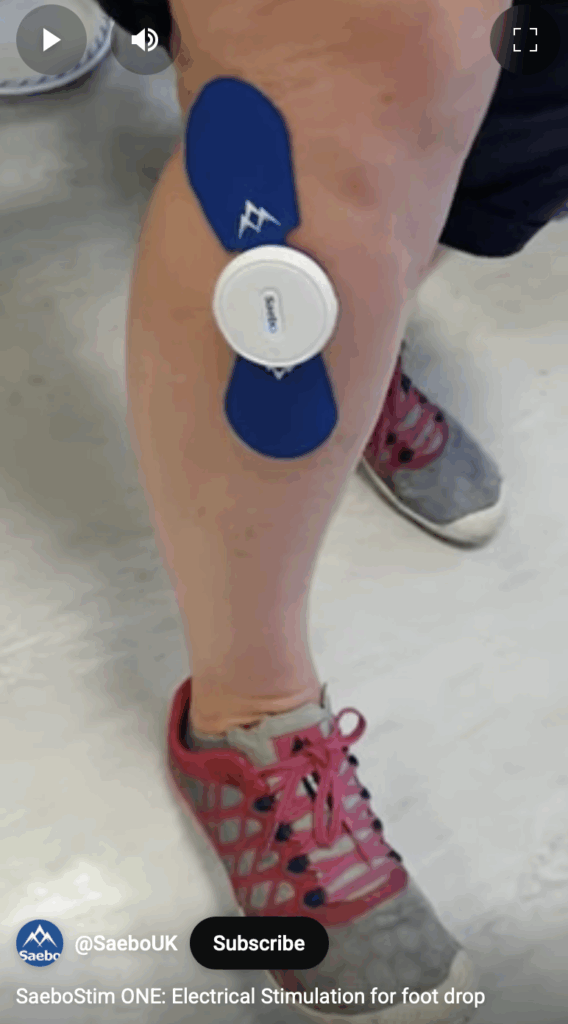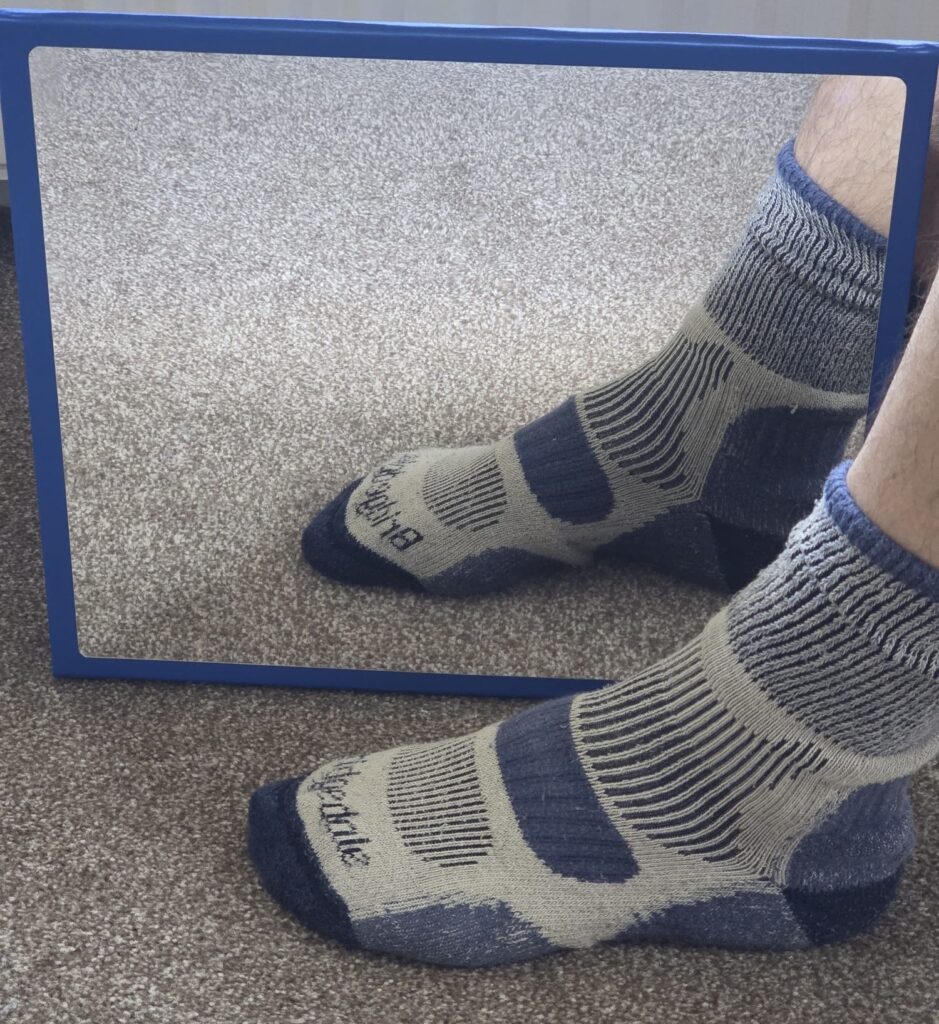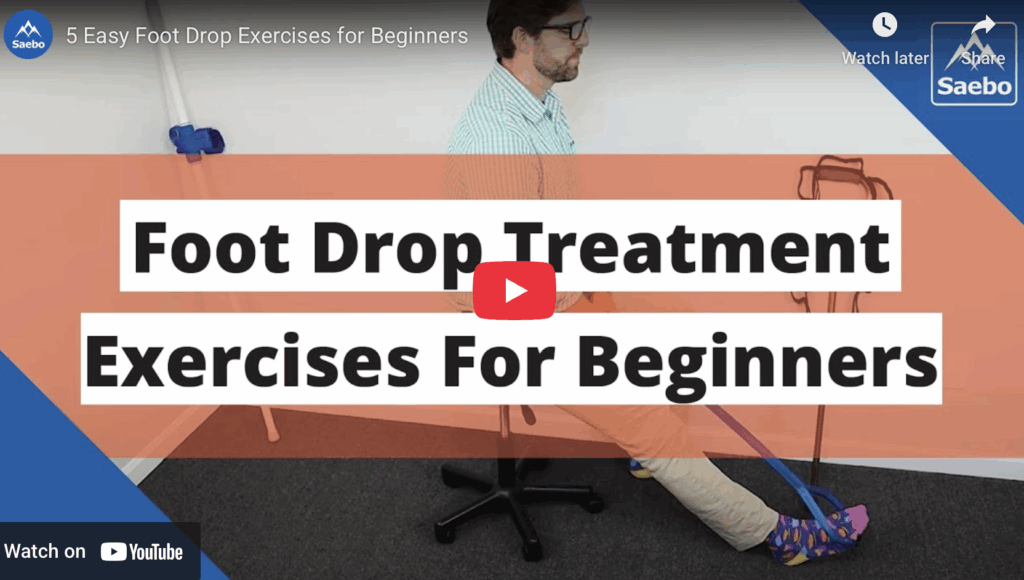Top 10 Evidence Based Foot Drop Strategies
Amy Bean
Wednesday, October 29th, 2025
#dropfoot#electricalstimulation#footdrop#nmesAFOMirror TherapyStroke rehabilitation
We’ve put together a practical reference guide for you featuring 10 recommended strategies to help manage and rehabilitate foot drop. These approaches are backed by current research and international clinical guidelines, ensuring they reflect best practices in neurological and physical rehabilitation.
Since foot drop can result from a variety of underlying causes, not every strategy may apply to every individual. However, we hope this guide serves as a valuable resource, offering a range of options to support your recovery journey and help you choose the methods that best suit your needs.
1. Orthotic
What are these?
Often call an AFO or Ankle Foot Orthosis, these are splints that are worn to help lift the foot when walking. They can either be custom made or off the shelf.
Custom made orthotics are typically for those that need a lot of support due to severe spasticity, unstable ankle, or loss of range of calf muscle preventing the foot going flat on the floor. An orthotist would assess and make a custom made splint which may require adjustments over time.
Our SaeboStep is an example of an off the shelf orthotic. These help by holding your foot in a lifted position so your toes don’t drag. The SaeboStep has an ankle cuff that wraps around your ankle with an adjustable cord attaching to eyelets that are secured in the shoe. The orthotic lifts the front of your foot when you walk, helping you take more natural steps, reducing effort and the risk of tripping.
There are many different styles of orthotics available so when selecting the right one for you ensure it is user friendly for you (e.g. can you get it on and off independently?), comfortable for all day wear, robust, and provides the lift and support that you need.
2. FES
What is this?
FES or Functional Electrical Stimulation uses electrical stimulation to stimulate the muscle activity required to lift the foot when walking. To help the timing of the stimulation to coordinate with your stride, devices typically have a motion sensor or heel switch to trigger the stimulation. The motion sensor is often built into a cuff that is positioned just below the knee; it detects specific movement of the leg to initiate stimulation for lifting the foot. A heel switch inside the shoe triggers the stimulation when pressure is taken off it i.e. your heel lifts as you start to swing your leg forwards.
A therapist will be involved to assess and set up an FES device for you.
You can also use FES as a training or rehabilitation tool if you are not yet mobile. It can be used to build strength and help start practicing taking steps. Our SaeboStim Pro can be used for this through its built in manual trigger button to control timing of the stimulation. Note that the SaeboStim Pro would not be a suitable device for everyday walking, but ideal for gait rehabilitation.

Orthotic VS FES – What does the evidence say?
Both have high quality evidence to support their use for managing foot drop during walking with neither being superior (Prenton et al 2016). Both are supported by the National Clinical Guidelines for Stroke for foot drop. It really comes down to user choice, access and affordability. The “best” option isn’t always the most advanced or popular—it’s the one that fits your unique situation.
🧠 Decision Factors to consider:
- Neurological status: If nerve-muscle pathways are intact, FES can be used to stimulate activity rather than provide a passive support with an AFO.
- Lifestyle and terrain: FES may be better for active users as it most closely matches a natural walking pattern; AFOs are better suited for those needing consistent support.
- Cost and access: AFOs are more accessible and lower cost; FES may require funding or specialist referral with long wait times if through the NHS.
- Personal goals: Consider whether the aim is rehabilitation (FES) or support/stability (AFO).
If choosing an AFO, why not add in NMES as a strengthening and rehabilitation tool to get benefits of both?
3. NMES
Neuromuscular Electrical Stimulation (NMES) is a technique that uses electrical impulses to activate muscles when you’re not performing a specific task. For individuals with drop foot, NMES can be particularly helpful in strengthening tibialis anterior—the primary muscle responsible for lifting the foot.
In addition to building muscle strength, NMES also helps move the ankle through its range of motion and gently stretches the calf muscles during stimulation. These added benefits can reduce ankle stiffness and improve overall mobility, helping prepare the body for walking and functional movement.
As well as our SaeboStim Pro, you can also use our SaeboStim One for this :
4. Task Orientated Gait Training
Instead of doing general leg exercises only, task-oriented gait training focuses on practicing specific walking activities that you would do in everyday life, e.g. walking on different surfaces, stepping over objects, turning corners, or climbing stairs.
Key Features:
- Real-world practice: You rehearse walking tasks that you actually need in daily life.
- Goal-focused: Each session is designed around a specific goal, like walking to the kitchen or getting up from a chair and walking across the room.
- Repetition and feedback: You repeat tasks many times with guidance and corrections to help your brain and muscles relearn the right movements.
- Adaptability: The training is adjusted to your current ability and gradually becomes more challenging.
It’s like training your body and brain together to walk better by doing the kinds of walking you actually need to do.
5. Strengthening
Why Strengthening Matters:
Foot drop is often caused by nerve damage, stroke, or other neurological injury. While specific treatment depends on the cause of the foot drop and what movement you have, strengthening the muscles around your ankle and lower leg can help you regain better control, improve walking ability and reduce the risk of tripping or falling.
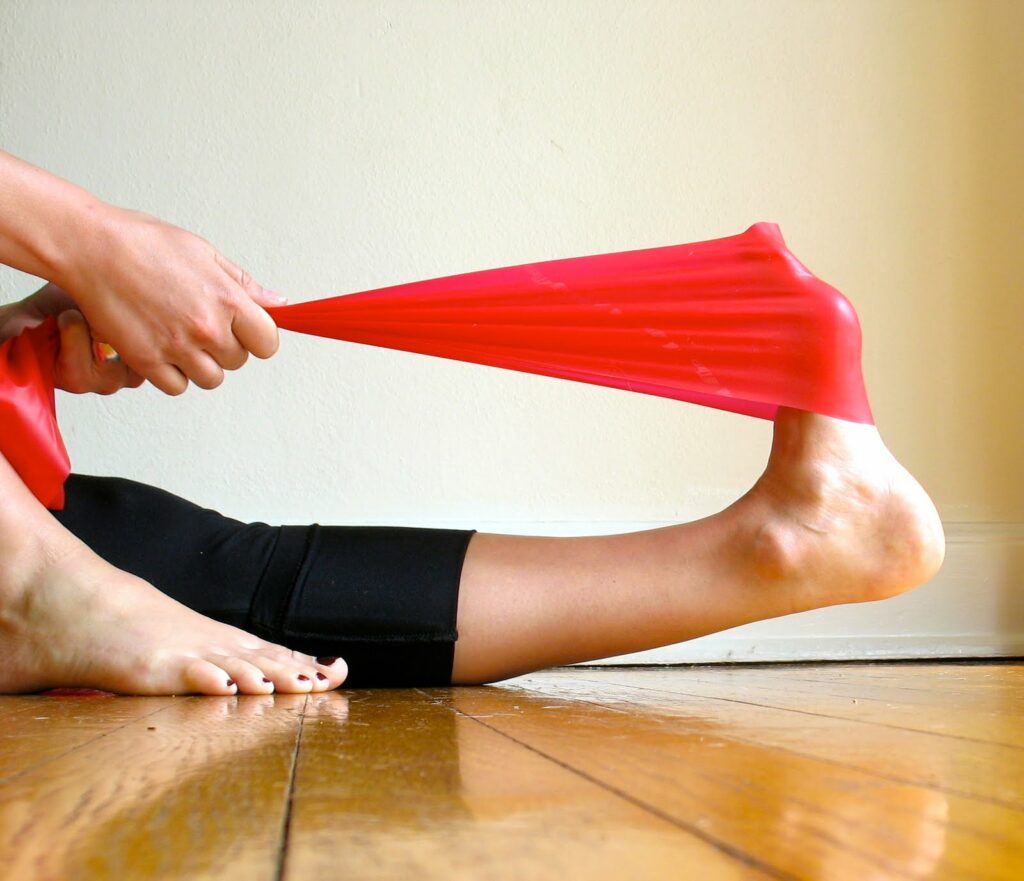
Key Muscles to Target:
Calf muscles – support balance and push-off strength. Pointing the ankle downwards, or raising up on to tip toes is an activity for the calf muscles
Tibialis anterior – lifts the foot upward, important when swinging the leg forward during walking.
Peroneal muscles (“Fibularis muscles”) – help with foot stability and side-to-side movement, and help turn the foot outwards (eversion) during walking.
Your own muscle activity is always preferred when working on movement and strength but if this is limited, NMES can be a helpful tool to help increase repetitions and generate muscle activity if there is very little.
6. Treadmill Training
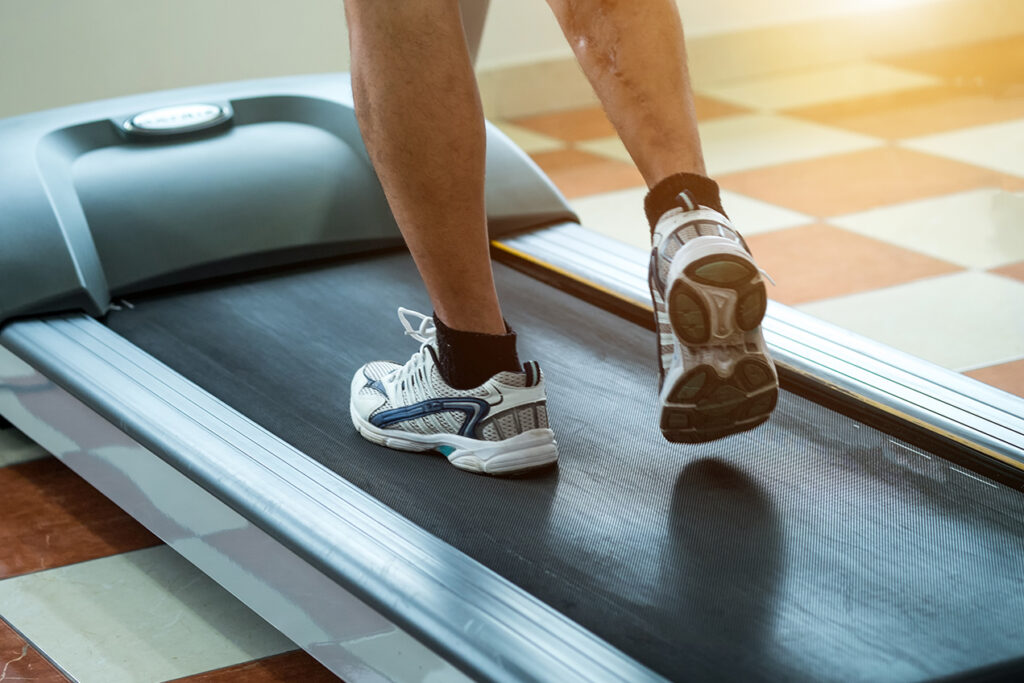
There is high quality research supporting the use of treadmills for gait training. The motorised walking platform allows high repetition of steps in a very controlled manner that can be adjusted to the users ability e.g. speed, incline, assistance through body weight harness etc. It also provides immediate data that you can use to help track your progress and give feedback.
You can use treadmills with AFO’s or FES to help reduce effort and promote a more efficient walking pattern when you have foot drop.
Treadmills can very from more expensive devices with body weight harness (available in some NHS trusts and private clinics), to gym treadmills to cheaper home office style treadmills :
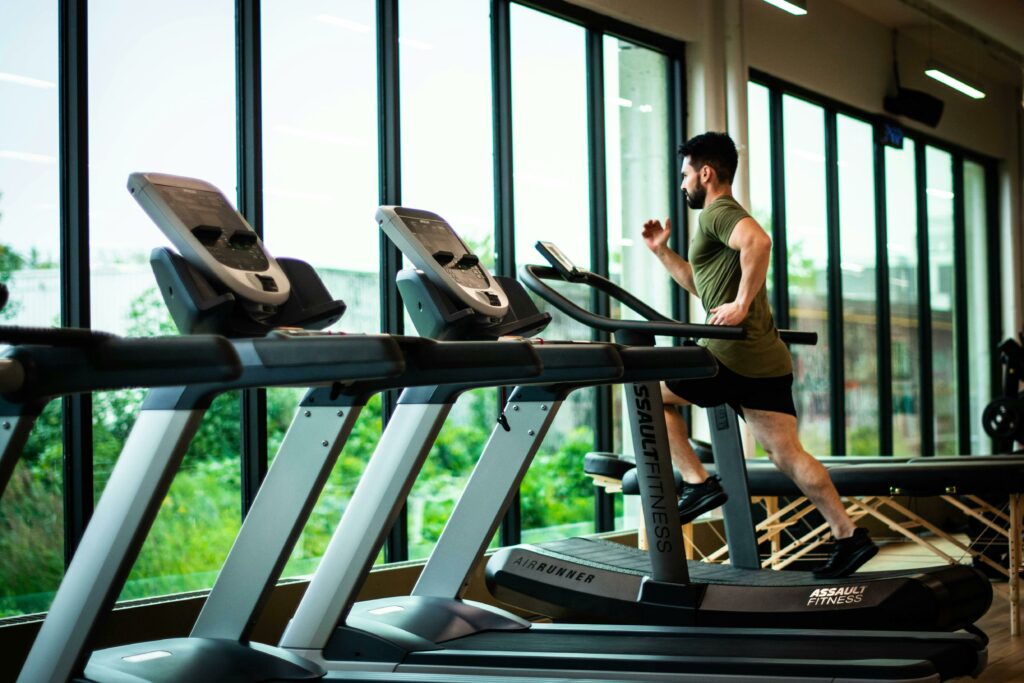
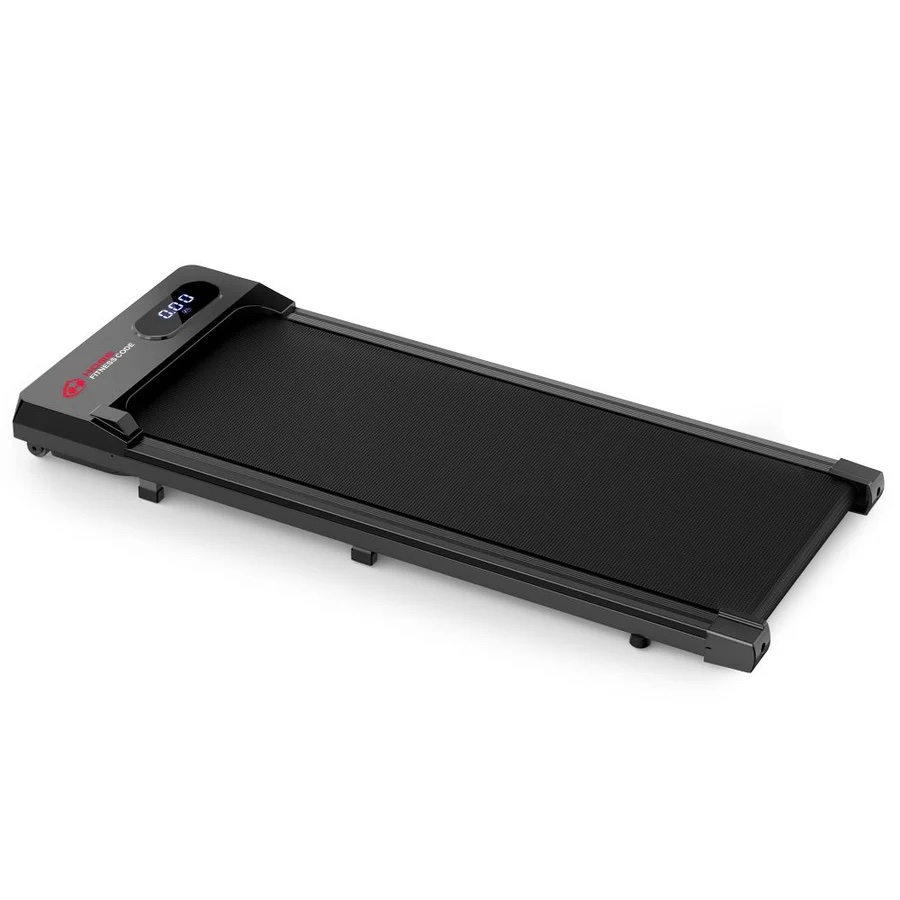
7. Repetition
As with all rehabilitation, repetition is key and this also applies to foot drop rehabilitation. The number of reps will be dependent on each person, their endurance, strength and also what can fit into your daily schedule.
This may be counting the steps you take throughout the course of the day (e.g. with a wearable watch tracker or phone app), the number of repetitions you do with an NMES device, or your own active exercises written down on paper.
8. Mirror Therapy
Although most commonly used for arm rehabilitation after a stroke, mirror therapy can also be used for the leg. There is good evidence to show benefit in the subacute and chronic stroke population (about 3-6 months and longer post stroke), it can help with motor activity including foot drop, walking and balance.
Consider using it for 30 min per day, 5 days a week for a minimum of 4 weeks, but you certainly continue longer. It can be used on its own or as an adjunct with electric stimulation to see beneficial effects.
Our SaeboMirror Box can be positioned on the floor when you are in sitting with your affected foot inside and your non affected foot outside. The large aperture of the SaeboMirror Box makes it user friendly for this purpose. Try to position the mirror box so that you can’t see your unaffected foot inside the box and you can view the mirror side clearly.
9. Spasticity Management
If foot drop is a result of a neurological injury such as Stroke or Head Injury, spasticity may be an additional factor in its management. Spasticity in the calf muscle will typically add to the pull down of the foot which will further exacerbate the difficulty in lifting the foot.
This can in turn lead to shortening of the calf muscle over time further adding to the problem if not addressed (see No.10 below).
The National Clinical Guidelines for Stroke 2023 recommend that :
“People with persistent or progressive focal spasticity after stroke affecting one or two areas for whom a therapeutic goal can be identified (e.g. ease of care, pain) should be offered intramuscular botulinum toxin. This should be within a specialist multidisciplinary team and be accompanied by rehabilitation therapy and/or splinting or casting for up to 12 weeks after the injections”

Additionally, FES, Strengthening, Stretching, Gait Training and AFO’s all contribute to the overall management of spasticity.
10. Passive Range / Muscle Length Management
Any joint that does not move frequently is at risk of developing shortening of surrounding tissues leading to restricted movement. This is referred to as a contracture when the change becomes permanent, and is not uncommon when spasticity and weakness are present. Regular stretching and positioning are key to prevent these changes particularly when there is minimal or no movement.
In the video below you can view a sample calf stretch, along with other suggested exercises for foot drop. Depending on your ability, you can also stretch your calf by standing on a step with both heels overhanging and slowly lower yourself until you feel a gentle stretch.
NMES to move the ankle joint through range can also help prevent loss of range over time.
Clinical Evidence
National Clinical Guideline for Stroke for UK and Ireland
Australian and NZ Clinical Guidelines for Stroke Management
Spasticity Management with Botox
Suitability for each of the Interventions listed above are dependent on the cause of your foot drop. If you are not sure what may be suitable for you please seek medical advice. If you would like advice on the suitability of the Saebo products mentioned please contact our Clinical team for guidance.
